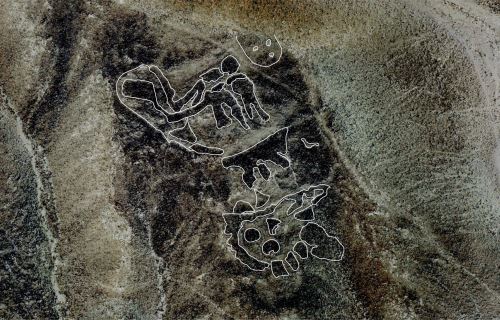13:34 | Ica (Ica region), Dec. 19.
29 years after UNESCO's declaration that recognized the
Lines and Geoglyphs of Nazca and Palpa as an Intangible Cultural Heritage of Humanity (December 17, 1994), a new discovery with impressive figures puts Ica region on the map.
As is known, Ica is home to a large variety of astronomical and religious expressions from ancient Peru.
In total, 29 geoglyphs were found by a team of 20 students and an archaeologist from Ica-based San Luis Gonzaga National University (UNICA).
The discovery took place in the districts of El Ingenio and Changuillo, located in the province of Nazca, in Ica region.
These geoglyphs depict representations of felines and anthropomorphic figures. They were discovered during a research project that took up to four months and was authorized by the Ministry of Culture.
The team was led by
Omar Bendezu De la Cruz, an archaeologist and professor at UNICA's School of Archeology, who told
Andina news agency that the above-mentioned geoglyphs date from between 300 BC and 100 AD and from late Paracas to early Nazca.
The researcher explained that the figures are located on the slopes of the hills in the population center of San Francisco in El Ingenio district and in the sector of San Juan in Changuillo district.
Bendezu explained that the geoglyphs were recorded using drones, and the images were analyzed using a specialized software in order to identify the shape of the figures.
"So far, 10 feline figures have been identified in the district of El Ingenio. Their sizes vary, ranging from 17 meters long and 12 meters high to about 42 meters long and 43 meters high," he asserted.
Meanwhile, eight feline geoglyphs were found in the population center of San Juan in Changuillo. Their sizes also vary, ranging from 11.30 meters long and 9.53 meters high to about 37.31 meters long and 13.70 meters high.
"The geoglyphs are oriented towards the south, pointing the Nazca Lines. It seems that inhabitants at that time viewed the feline as a deity or it had a very special meaning for them," he said.
The expert affirmed that, following these new findings, studies will continue so as to understand what the feline meant for the society at that time.
Felines constitute a recurring representation in the Paracas Culture, in ceramics and textiles. Some researchers believe they are linked to fertility and are considered a water deity.

Anthropomorphic figures
Bendezu De la Cruz explained that 10 anthropomorphic geoglyphs were found on the slope of the hill in the population center of San Francisco in El Ingenio, while one anthropomorphic figure was recorded in San Juan.
"The discovery of these new geoglyphs in El Ingenio and Changuillo, in the province of Nazca, is significant for Peruvian archaeology," he stressed.
(END) GBL/MAO/RMB/MVB
Publicado: 19/12/2023